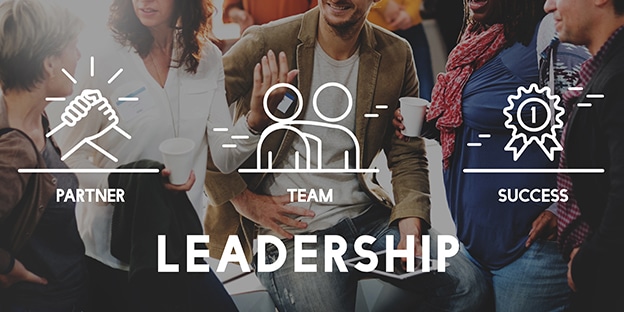
Over the years, the term agile has evolved from strictly being a part of software development manifesto to having a role in business facets. In today’s ever changing and disruptive business world where technology is fast-changing and so are the needs and demands of the customers, it’s time for the organizations to adopt a resilient business model that’s quick to respond and adapt.
In order to survive and grow speed and agility are the perfect competitive weapons. When we build a culture of agility, we create a significant competitive advantage that is difficult to replicate. Interestingly, the key to achieving successful agility in an organization begins from transforming leaders. Developing the right mindsets and capabilities of senior leaders go a long way in equipping the organization for future challenges and opportunities. In this respect, leadership development programs play an important role in imparting the desired skill to the talent resources.
Schedule a call with a Pragati Leadership expert to discuss how we can support your strategic objectives.
Schedule your CallWhat leaders need for agile transformation?
Starting at ground zero, top leaders need three sets of capabilities for agile transformations. These include:
- Self-transforming to evolve new personal mindsets and behavior
- Transforming teams to work in newer and better ways
- Transforming the organization by incorporating agility into the design and culture of the whole enterprise.
Let’s take a closer look at each of the above pointers for better understanding.
Transforming one’s self
Leaders must be prepared to espouse changes and adapt to innovative ways in order to fully transform themselves for the good of the organization. They need to shift to a creative mindset that’s open to the diversity of thoughts, creative collision, and unpredictable risks. Executive leadership training programs can be useful in creating this mindset.
Unlike traditional organizational designs that worked on a hierarchical structure, the new leadership demands shift from authority to partnership mindset. Fostering collaboration and building partnership with the team through freedom, trust and accountability can serve as the cornerstone for building and leading an agile organization.
Also, to deliver concrete results, leaders must view markets with a creative mindset of abundance. This implies realizing the unlimited resources and potential available to the organizations thereby, laying the ground for customer-centricity, dynamic entrepreneurship, inclusion, and value co-creation.
Transforming teams
Organizations that are agile, consider each team as a value-creating unit that has the ability to impact the business positively. So, when leaders build teams that excel in creativity, innovation, and agility, they deliver more value to the organization as a whole. But how can leaders help teams adapt to the agile ways? Well, this can be done by:
- Building small empowered teams that are diverse yet well-connected.
- Developing and encouraging agile teams to work in rapid cycles so they deliver greater value more efficiently and quickly.
- Guiding agile teams to stay focused on a customer-centric approach. They must be able to create value for customers, by understanding & addressing their potentially unmet and unrecognized needs.
All these are a bit complex and call for nurturing and honing leadership skills in the right way. Effective leadership and communication skills training is often viewed as an excellent way to accomplish the goal.
Transforming organization
Unlike traditional executive-team exercise, in agile organizations, leaders bear the responsibility of sharing the organization’s purpose with people across the enterprise.
Designing and building an agile organization demands a set of skills based on a different understanding of organizations. It’s pertinent for the leaders to design their organization considering it to be a distributed and continually evolving system. Such an organization encompasses a meshwork of smaller empowered units, with lean management and greater transparency.
Besides all, the leader must learn how to undertake a multifaceted culture-transformation effort that centers on their own capabilities and behaviors. Whether its role modeling new mindsets, fostering understanding and conviction, leading virtual teams effectively, building capabilities across the organization, or implementing reinforcement mechanisms in the agile design, a true leader can make a lot of difference!
Concluding thoughts
While a robust foundation is core to developing a nimble organization, initiating agile pilots and then scaling it through the organization successfully is imperative for consistent progress. Adhering to the following essential elements can help achieve the objective:
- Taking help of a cadre of enterprise agility coaches for supporting the leaders.
- Engaging the top team in developing capabilities at the early stage.
- Creating immersive and inspiring leadership experience.
Inviting leaders to apply their learning in practice.
Share on Social Channels
Our Categories
Categories
- Behaviorial (7)
- Blog (257)
- Certified People Manager Program (2)
- Coaching (8)
- Corporate Trainers (7)
- Developing Collaboration (12)
- Emotional Intelligence Training (12)
- Executive Leadership Program (28)
- First Time Manager Training (11)
- Growth Mindset Course (3)
- Inspirational Leadership (17)
- Inspiring and Successful Leadership Awards (16)
- Leadership Awards (37)
- Leadership Development (122)
- Leading Virtual Teams (6)
- Management Development (29)
- Marketing (2)
- Negotiation Skills Training (7)
- Organizational Transformation (24)
- Others (24)
- Stakeholder Management (3)
- Strategic Leadership Development Program (4)
- VUCA Leadership (2)
- Wholesome Leadership (23)
- Women Leadership (15)
Recent Insights
“Alone, we can do so little; together, we can do so much”. Every day, executive...
“Leadership is not about being in charge. It is about taking care of those in...
Workplaces have changed more in the past five years than in the two decades before...
“The single biggest way to impact an organization is to focus on leadership development”. Schedule...
Most people think success is about talent or being born naturally gifted. However, it is...
